LWVS Supports Proposed '19-'20 Village Budget and Comments on Board Process, Communication and Conflicts of Interest
- Details
- Written by Joanne Wallenstein
- Hits: 8080
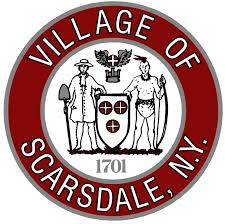 Below find the consensus statement on the proposed '19-'20 Village budget from the League of Women Voters of Scarsdale, submitted by League Budget Chair Dara Gruenberg and League Co-Presidents Linda Doucette-Ashman and Janice Starr:
Below find the consensus statement on the proposed '19-'20 Village budget from the League of Women Voters of Scarsdale, submitted by League Budget Chair Dara Gruenberg and League Co-Presidents Linda Doucette-Ashman and Janice Starr:
The League of Women Voters of Scarsdale (“the League”) held a membership meeting on Monday, April 8th, 2019 to evaluate the FY 2019-2020 Tentative Village Budget. We thank Village Manager Steve Pappalardo, Village Treasurer Mary Lou McClure, Mayor Marc Samwick, and Trustee Justin Arest for attending the meeting and addressing our questions related to the proposed budget, Board process, code amendments, as well as other issues going forward.
The League supports the proposed FY 2019-2020 budget and commends Village staff, former Mayor Dan Hochvert, and the Board of Trustees (the “Board”) for conducting a well-managed and thoughtful process and proposing a budget that evidences careful planning and balancing shrewd fiscal management with resident expectations of a high level of services provided (see financial overview pg. 6-7).
During his presentation, the Village Manager addressed the issue of the changes in tax laws regarding the cap on SALT deductions. He stated that the Board and Village administration’s approach to the budget has been one of caution since the market collapse in 2008-2009 and that this has continued to be the attitude of the Village for the past decade. The Village allowed homeowners to prepay their taxes in December 2017 and created a charitable gift reserve fund where allowed by law. The impact of this tax law change on the housing market is still unknown. Mr. Pappalardo also mentioned the significant loss in “Aid and Incentives for Municipalities” (AIM) funding to local municipalities for the last two decades and that the Village has sought ways to make up for this loss of funding.
Regarding debt service, as per Treasurer McClure, the FY 2018-2019 budget benefitted from a reduction in debt service of $484,000 with the final payment on a Bank Anticipation Note (BAN) ($330,000) and the scheduled retirement of the 2002 bonds ($148,000). The Library Bond resolution was amended in February 2018 to permit pledges to be included in the Library Capital Campaign Committee’s commitment to raise $7.5 million towards the cost of the Library addition and improvements. Based on this, the construction contracts for the Library were awarded in June of 2018. The May 31, 2018 Financial Statements were presented to the Board in September. Based on those events and the amendment to the bond resolution in February 2018, the Village borrowed $9.9 million for the project in the bond market in October 2018. The budget for 2019-2020 includes the initial payments of principal and interest on the Library bond issue partially offset by the receipt of a premium in excess of $447,000 on the issue. The net impact in 2019-2020 was an increase in the debt service of $452,000. The 2019-2020 budget also includes the final payment on the Popham Road Bridge BAN, which will further soften the impact of the Library Debt issue in 2020-2021.
The main topics of discussion during the League’s consensus meeting were as follows:
• Deferral of Capital Maintenance Projects
• Investments in Technology
• Water Rates and Infrastructure
• Evaluation of the Food Scrap Program
• Increase in Staffing: Part-Time Code Enforcer
• Board Process and Communication
• Board of Trustees’ Conflicts of Interest
Deferral of Capital Maintenance Projects
We thank the Village for its capital planning to maintain debt service as level as possible and appreciate how Village administration has prioritized projects to ensure that critical Village services come first, such as water infrastructure, sewers, and emergency services. The League encourages the Board of Trustees and Village administration to begin a community conversation about long-range planning for capital projects to address the Village’s aging infrastructure and future needs. As an example, electrical, HVAC, and security maintenance and upgrades to Village Hall have been deferred continually over the years and are not being addressed in this budget either. As suggested by Village Manager Pappalardo during the League’s information session, the scope of work required at Village Hall is significant enough to consider the possibility of building a new Village Hall in the existing parking lot while keeping the old building open during construction; this would avoid the expense of relocating Village staff and government services, which occurred during the Popham firehouse renovation. The League recommends the Board and Village administration begin to engage in a thoughtful and comprehensive public dialogue about this work and other capital infrastructure needs, as well as to discuss the plan for financing such improvements and to publicize these long range plans.
Investments in Technology
Water
The League supports the installation of new water meters with remote reads and the steps taken to move towards a paperless billing system. With regard to the decision to change from a quarterly to a monthly billing cycle, the League appreciates the benefits of real-time reads and the fact that more frequent billing will alert residents earlier to unusually high water usage and potential leaks, thereby helping residents to save money and conserve water. Because of the environmental and monetary expenses associated with printing and mailing water bills, the League recommends that the Village wait to implement the monthly billing program until it is able to employ online billing. The League encourages the Village administration to utilize multiple avenues to ensure effective communication of these plans to all Village residents.
Parking
The League understands that the Village will be purchasing another License Plate Reader (LPR) to police merchants feeding the meters and parking in consumer spots in order to encourage merchants to park their cars in the allocated parking areas. The League recommends that proper policies and procedures be established to ensure that any personal information gathered with these devices will be used responsibly for the purpose for which it is collected, will be stored securely, and will be handled in a manner that safeguards individual privacy rights.
Sanitation
For over a decade, Village staff has been trying to locate suitable replacements for the now obsolete Cushmans, the small vehicles that enable the sanitation department to provide side and rear property waste pick-up service. After scavenging for parts to maintain the existing Cushman fleet and supplementing with less efficient small pick-up trucks, the Department of Public Works (DPW) believes it has found a suitable replacement model similar to the Cushmans, made in Canada, and has budgeted for purchasing two more this coming year. The League commends staff members on their tenacity and persistence in identifying a means to preserve this level of sanitation service for Village residents.
Water Rates and Infrastructure
The League appreciates the Village’s explanation and communication regarding the rise in water rates due to a long history of underfunding Scarsdale’s water infrastructure. Now, the Village’s rates are more in line with other nearby communities. Additionally, the League recognizes that in order to generate sufficient revenue to maintain infrastructure, water rates also need to increase to compensate for conservation efforts that have succeeded in reducing water consumption, particularly among users who are billed at the higher excess rate. The League commends our Village Manager and staff for continuing to advocate and negotiate with New York City on our fee structure, recognizing that suburban water usage differs significantly from urban usage.
Evaluation of the Food Scrap Program
The League looks forward to the assessment of the food scrap initiative started this past year and the presentation to the public of all relevant data collected by Village staff and all additional metrics by which the community may understand both the environmental and financial impact of this program.
Increase in Staffing: Part-Time Code Enforcer
The League appreciates the increase in staff dedicated to code enforcement and looks forward to updates on the efficacy of the newly added part-time code enforcement position, which will include Saturday hours.
Board Process and Communication
Village Board Working Sessions and Informal Opportunities for Public Input:
The League commends the Board of Trustees for its plan, as Mayor Samwick explained at the information session, to move to a new structure that employs working sessions of the full Board with published agendas and minutes or notes in place of the former committee structure that limits participation and voting rights to only the two or three trustees assigned to each committee. The League also commends the Mayor for his plan to provide more opportunities for informal input from the community, such as holding coffees with the Mayor and Board members, recognizing that speaking at public meetings can be intimidating for many residents. Furthermore, the League commends the Board for moving the opportunity for public comment to earlier in the Village Board meeting agenda, prior to liaison reports, as to emphasize that the key purpose of the trustees, as Mayor Samwick stated, “is to listen to the public.”
The League values voter education and recommends that all meetings of the Village Board, including the new working sessions structure, be recorded and, whenever feasible, live-streamed for greater resident participation and accessibility to Board discussions. To improve communication and transparency, the League also suggests that the public agendas contain more detail and be written in a more user-friendly and clear format.
Code Amendment Process, Public Hearings, and Hot Button Issues
The League recommends the Board strive to be more consistent and transparent in how it approaches changes to the Village code and gathers community feedback, particularly on issues known to be of import to residents. The League encourages the Board to codify a process that would:
1. educate the public;
2. give residents and relevant boards, councils, and advisory committees sufficient opportunities and avenues for providing feedback on said changes;
3. allot time for the Village Board to process and reflect on community input and discuss the matter in an open session;
4. schedule voting on substantive changes for a subsequent meeting after all previously-discussed code changes have been incorporated into a properly noticed public hearing.
The League acknowledges that certain pro forma matters, such as taxi license renewals, do not require extensive outreach. However, the League observed that the process by which modifications were adopted to the tree code and to the law regarding solar panels did not provide sufficient informed and active participation by the public. Additionally, there was insufficient time allowed to understand and evaluate the newly suggested changes and their potential impact prior to their inclusion into the proposed code language before it was voted on at the same meeting in which the changes were suggested. The League agrees with the sentiment expressed by Mayor Samwick at the information session to the effect that “incrementalism is a very valid approach” to governance. Additionally, the League urges the Board and staff to focus on more proactive and creative outreach to the public by utilizing local media and other platforms, such as social media.
In regard to ongoing and persistent “hot button” issues, such as parking in the Village center, the League encourages better communication and allowing for public input when changes are being considered, even though such decisions ordinarily fall under the purview of administrative operations of Village staff. Because of the nature of balancing parking needs between merchants, commuters and shoppers, the League recommends that the Village employ a more methodical, thoughtful and open process that includes benchmarking, reviewing what has or has not worked in Scarsdale in the past, and looking at other communities’ practices when setting permit fees and re-allocating spots among the different users.
Board of Trustees’ Conflicts of Interest
The League encourages local volunteerism and appreciates the fact that trustees often have a history of active involvement in community-based organizations before they are elected to office. In keeping with the spirit of fostering the community engagement of all residents, and in accord with Trustee Arest’s comments at the information session that “the trustees are elected to represent the entire community,” the League commends the Board for self-regulating and adhering to the practice of discretionary recusal in the face of potential, real, or perceived conflicts of interest stemming from the activities of Board members’ spouses and immediate family members who engage in local advocacy and have volunteer roles in local organizations, boards, and councils.
The League likewise encourages members of the Board of Trustees to be more cognizant of the Board members’ own current activities and affiliations, volunteer and otherwise, with regard to Board action and Board liaison assignments. The change from the Board’s committee structure to full Board working groups may diffuse the impact of any single member’s potential conflict of interest, real or perceived; however, just as the Board has addressed spousal or family issues by means of discretionary recusal, the League urges the trustees to consider whether their own current activities present a potential, real, or perceived conflict that should trigger recusal from particular issues that come before the Board.
Conclusion
We thank you for your invaluable assistance and cooperation that was extended to the League in our study of the proposed budget and Board of Trustees process. We commend the Board and Village management on the timeliness, quality of data, analysis, and transparency with which the Village
Manager, Village Treasurer, Mayor and Trustees developed the 2019-2020 Village Budget. We applaud you for your professionalism and dedication to our Village. Thank you for taking our comments into consideration.
Sincerely,
Dara Gruenberg, LWVS Village Budget Chair
Linda Doucette-Ashman and Janice Starr, LWVS Co-Presidents
Varsity Baseball Team Off to a Strong Start
- Details
- Written by Anna Cho
- Hits: 3686
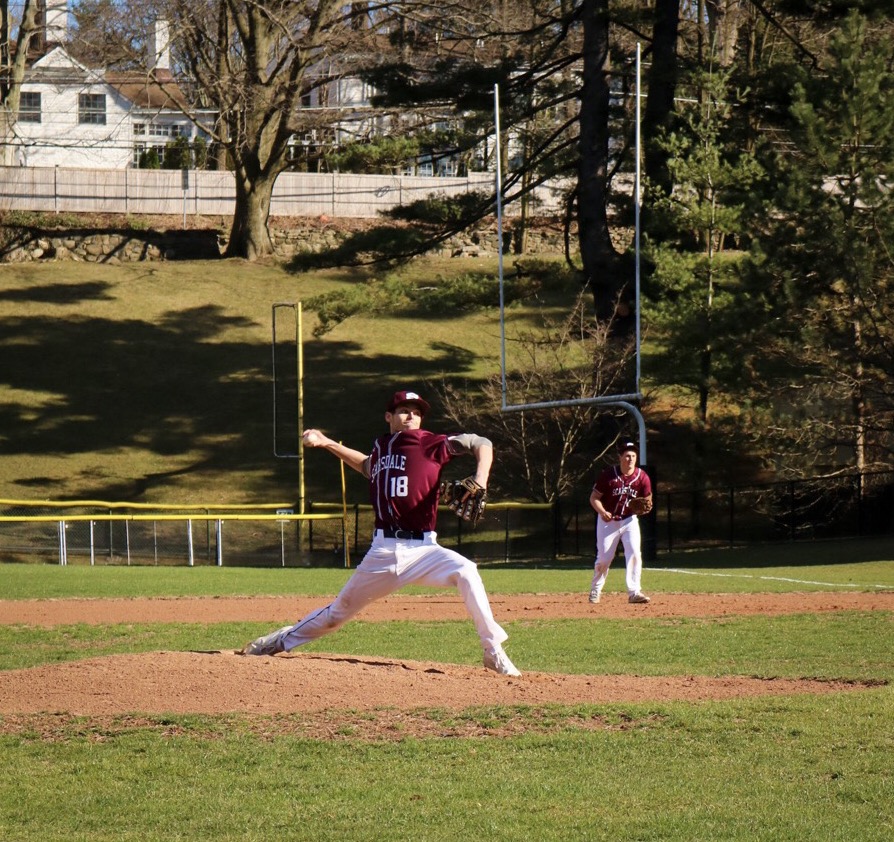
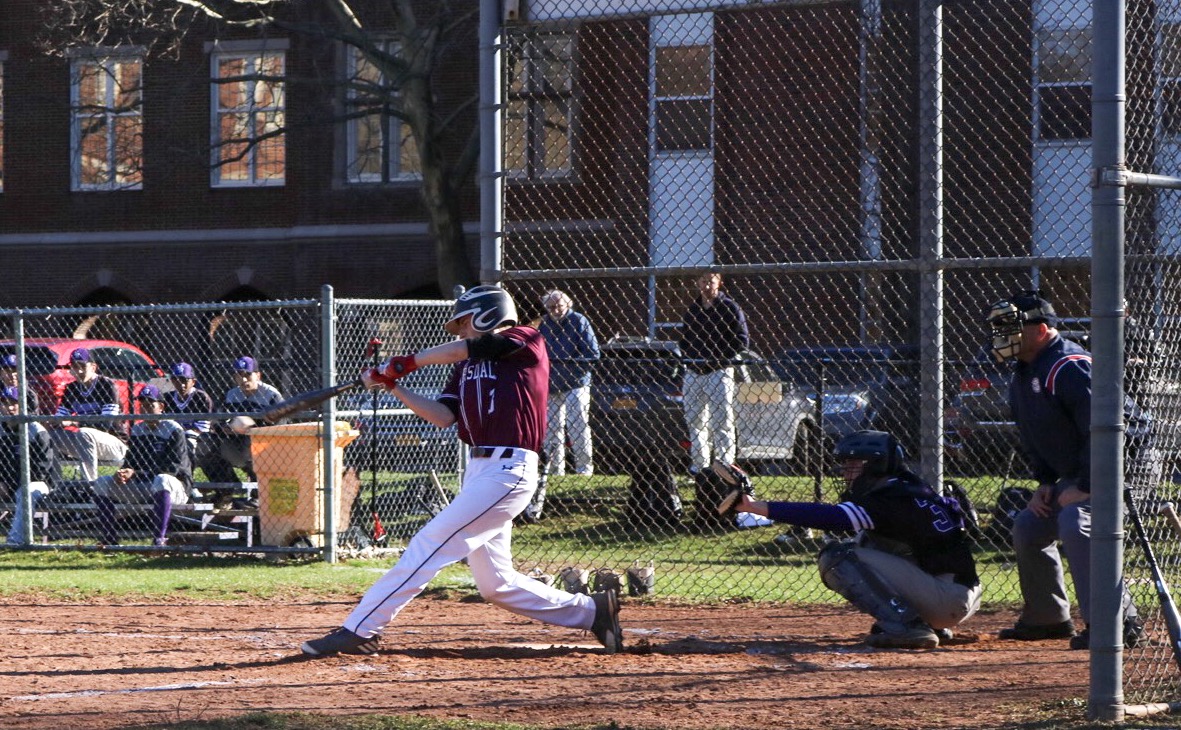
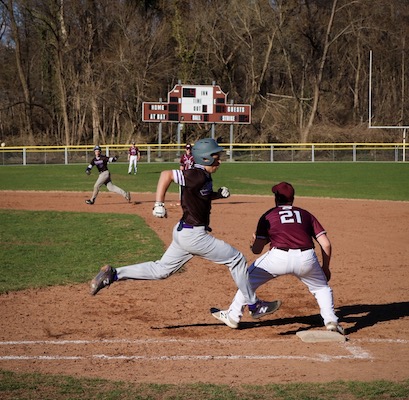
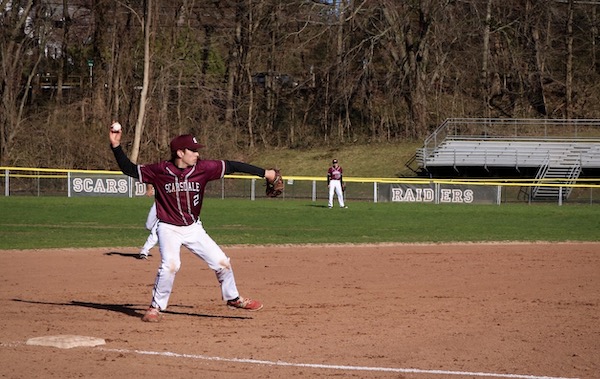
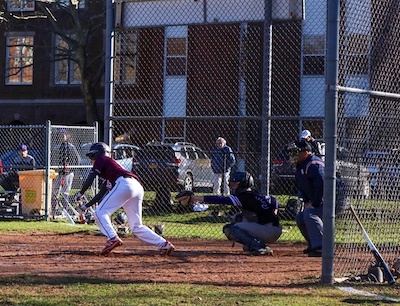 Scarsdale’s Kevin Walker (10), hits a bunt allowing him and his teammate, on first, to run safely onto their respective bases.
Scarsdale’s Kevin Walker (10), hits a bunt allowing him and his teammate, on first, to run safely onto their respective bases.
Land Use Committee Weighs Landmark Preservation Law
- Details
- Written by Laura Halligan
- Hits: 4651
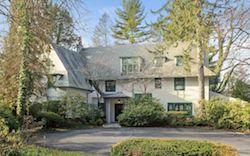 On Wednesday March 20 the Scarsdale Land Use Committee discussed a draft landmark preservation law to protect buildings and other structures that “represent distinctive elements of the village’s historic, architectural, and cultural heritage.”
On Wednesday March 20 the Scarsdale Land Use Committee discussed a draft landmark preservation law to protect buildings and other structures that “represent distinctive elements of the village’s historic, architectural, and cultural heritage.”
The proposed law, drafted by former village attorney and outside counsel, Wayne Esannason, takes a proactive approach to historic preservation by identifying and pre-designating specific homes in Scarsdale, as opposed to reacting to owners’ applications to demolish structures.
Currently, when a property owner applies to demolish most (over 51 percent) or all of an existing structure, the building inspector refers the matter to the Scarsdale Committee for Historic Preservation (CHP), which researches the home and conducts a public hearing to determine whether the application should be approved. Homeowners who do not agree with the CHP’s decision are able to appeal to the Scarsdale Board of Trustees (BOT).
The proposed law would effectively eliminate this process, making the CHP responsible for independently researching Scarsdale houses, together with an outside expert, and informing the BOT about properties that should be landmarked. The BOT may refer the suggestions to the Scarsdale Board of Architectural Review (BAR) for additional feedback but, ultimately, would make the final decision about whether a home is designated. Of course, the property owner would be notified about the process and invited to respond via a public hearing.
The new law also stipulates that, once a property is designated as a landmark, the village code will be amended to include the information, and the Westchester County Land Records Division will be notified of the change so that it can be registered with the county.
Sometimes You Need Just a Change
Currently, the village code has no guidelines or regulations that outline how a historic property can be changed or renovated. If a property owner wishes to alter the structure, he or she submits a request to the BAR, which does not take into account whether the house is historic; BAR decisions are limited by what is articulated in the village code.
The proposed law requires property owners to request a certificate of appropriateness for any modification to a designated home, which would be considered by the BAR, “in compliance with the Secretary of the Interior Standards for Rehabilitation and Guidelines for Rehabilitation of Historic Buildings.” Further, any request to demolish a designated property, in whole or in part, would be subject to stricter requirements, such as whether the structure “is of such age, unusual or uncommon design, texture, and materials, that it could not be reproduced or reproduced only with great difficulty.”
To this, Trustee Seth Ross said, “The review seems to be from a historical, rather than architectural perspective. Why is it that the BAR, rather than the CHP, would be responsible?” Trustee Justin Arest later echoed the concern by saying, “We’re thinking about giving a large responsibility to the BAR… overseeing hardship applications, tearing down a home… These things have nothing to do with aesthetics.“
Esannason responded, “It could go either way, but… because it involves architectural features… you would want a board with a certain degree of expertise… to evaluate changes or modifications to a structure that already has been designated.” Trustee Carl Finger then clarified that there are two possible scenarios – modification and demolition. He wondered why a request for demolition would go the BAR: “It’s not a architectural situation, the issue deals with the historical nature of a property. “ Esannason then noted that the CHP would be notified and/or conferred with prior to any decision by the BAR.
The discussion then focused on hardship cases. A property owner may exercise his or her right to appeal the BAR decision, but what happens next is up for discussion. Esannason stated that, although the draft law states that the BOT would make the final determination, another option to consider is having appeals go directly to court via Article 78 “and not create a series of layers and steps of appeals internally.”
Finger responded, “I think it’s, potentially, a benefit that, before they have to go to court, (applicants) have that safety valve, if they think the BAR is off, they can go to the Board of Trustees before a court filing.” Esannason added, “Another way to look at this is, we’ve had a number of appeals come to the board of trustees in recent years and, in many of those cases, the BOT overturned the decision of the lower board. That was something that the members of the CHP was aggrieved by… it’s a policy decision.”
Ross then stated, “It’s, similarly, a benefit to the village not to have to defend an Article 78… we can deal with something within the village without, hopefully, having to go to a lawsuit.”
The group went on to debate whether various requests should be handled differently, for instance, the BOT should not have to weigh in on whether a property owner wants to add dormers, but, perhaps, the BOT should get involved in requests for demolition.
Mayor Dan Hochvert followed by questioning whether future owners of a designated property would be able to question or appeal its historic designation. Esannason replied, “Once it’s designated, it runs with the land. It’s filed with the Westchester Division of Land Records and maintained in the village code. The only way to be removed is if the board of trustees determines that it should.”
Getting There
After reviewing the code itself, the committee turned its attention to how properties actually would be designated. Village Manager Steve Pappalardo said that the CHP likely would begin its assessment and research with the village’s 2012 Cultural Resources Survey, which provides a “snapshot” of just over 70 properties deemed to have historical significance. With the help of an expert consultant, such as Dr. Andrew Dolkhart, the CHP would develop a record to support each designation and then provide its recommendation to the BOT for consideration. The process will not be completed overnight, however; rather, it will likely take years due to budget constraints. Pappalardo reported that, after preliminary discussions with consultants, it would cost an estimated $3,000 to $5,000 to assess each home. So, it is more reasonable to assume that just 15 to 20 homes would be assessed annually; given that the village will start with at least 70 homes, the process could take five or more years to complete.
Because the foundation of any effective landmark preservation law is strong support for each landmark determination, it is important for the CHP and consultant to completely and accurately record information on every house to withstand the review process and reduce questions in the appeals process.
So, even if the code is adopted, it will be a while before residents actually feel its impact. The existing review processes for alterations or demolitions of particular homes will remain, likely until a certain number of houses have been deemed historic. The village probably will create a “sunset provision” to transition to the new law that indicates when the existing code will no longer be in effect.
What Say You?
Trustee Jane Veron then asked members of the public to contribute their thoughts. Kevin Reed (6 Kensington Road), who is a member of the CHP said, “The procedure by which the BAR can issue a certificate of appropriateness for demolition seems to me to be a dangerous undermining of what we’re trying to do here… To provide for a circumstance for a building to be ‘undesignated,’ the criteria ought to simply be (that it) no longer meets the criteria that led to it being designated in the first place. And this should be posed to the board that made the designation. The burden should be on the applicant to prove the changed circumstances… To me, once something is designated, it should be presumed that it isn’t in the public interest for it to be destroyed.”
Carl Pforzheimer (16 Tompkins Road) stated, “You should think about whether we’re talking about demolition or ability to sell… I live in an old house and am proud to do so… to severely restrict my ability to sell my home… is not… ‘promoting the economic, cultural, educational, and general welfare of the residents of the village…’ Before the village begins to landmark buildings… much thought should be given to exactly why the village needs this proposed law, why it might not, and, especially, to the proposed law’s broad scope. Thought also should be given to the burden of landmarking, especially to homes that have outlived their earlier charm. Indeed the continuing vitality of the village comes from young, new residents, bringing with them fresh, new ideas. “
Ellen Zweig (53 Old Orchard Lane) followed, “We ended up buying (our) house because we liked the location… We’ve spent close to $500,000 since buying that house, on improvements, and I don’t think that’s reasonable to expect… By passing such a law, you’re taking away all the rights of the property owner. You’re turning their house into a museum… for other people to look at and not for the owner to live in… When a house is in a right of way… and a town needs to widen the road, they condemn the house… but they buy the house from the owner. I think you’re, essentially, doing the same thing but you’re not providing any financial remuneration to these poor owner who have to maintain these very old houses.”
Laura Gelblum (45 Brewster Road) said, “You have to be careful about this… I do agree that we have to think about all the constituencies and the burden it might place on the property owner… There’s been a lot of talk on what we can do to preserve the homes, but I’d really love to see some creative thinking about what we can do to incent builders and buyers to renovate. Is there something we can do to make the renovation more appealing than the teardown?”
In response, members of the committee asked if it was possible to create a local tax incentive; Elizabeth Marrinan, the Village Planner, and Esannason reported that it was not possible, but property owners may be able to apply for federal tax credits. After additional discussion about how “valuable” a historic designation might be, Finger stated, “One of the concerns we have, is that your house could be historical but we don’t know it. Then.. you go before the CHP and find out its historical, and, maybe, it’s better that you know ahead of time… at minimum, you can plan accordingly, market your house accordingly.”
In discussing next steps, Arest expressed that he’d like to get the CHP and BAR involved in reviewing and commenting on the draft. He also mentioned, “I’d love a multi-tier structure of some kind, with the really, historic houses at the top… then a second tier, where you’re designated of sorts, and the restriction is that the BAR has a little more say in terms of what you can do… It’s one of the conversations I hope we can have.”
Ross said, in moving forward, it was important to note that, “We’ve tried to use the historic preservation law as a way to preserve the character of neighborhoods. That’s not really the function. The function of an historic preservation law is to protect a specific structure that is of historic value.”
Ehud Gelblum (45 Brewster Road) followed by saying, “Is the purpose to keep the character of our neighborhoods… or is it to preserve historical structures? … What if we happen to have a home that George Washington slept in for a week, but it’s an ugly house with bursting pipes? Do we keep it? Or what if we have a house done by a master, but it’s (not a nice) house…. Do we care about historical… or are we using this as a vehicle to get to preserving the character of what we think is, know is, Scarsdale? Do we get rid of the whole ‘historic’ concept and… go into the ‘these houses in this area should look like this.’ I don’t know if that opens up a whole other can of worms, but it allows… someone who wants to tear something down (to do so)… maybe the BAR is tasked with (enforcing) criteria and (saying) this is exactly what it’s going to look like.”
Veron closed the meeting by reminding the group that the issue is clearly complicated, and more discussions will take place as the new board of trustees considers a host of land use priorities.
Shelly Eisenman Passes Away at 86
- Details
- Written by Joanne Wallenstein
- Hits: 4769
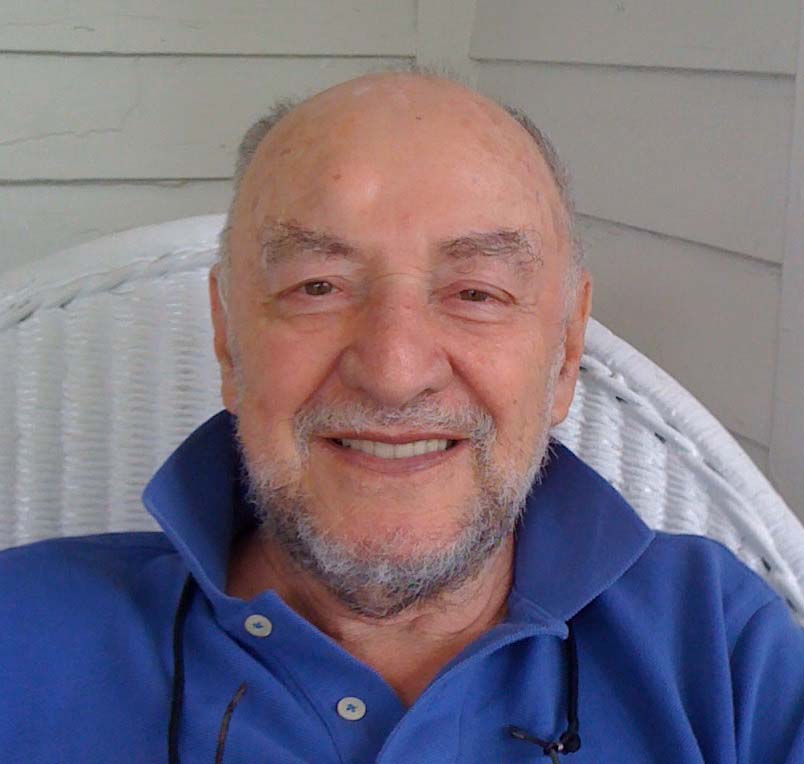 Dr. Sheldon (Shelly) Eisenman, 86 years old, of Greenacres in Scarsdale, New York died March 21, 2019 peacefully at White Plains Hospital after a brief illness.
Dr. Sheldon (Shelly) Eisenman, 86 years old, of Greenacres in Scarsdale, New York died March 21, 2019 peacefully at White Plains Hospital after a brief illness.
Sheldon was born October 2, 1932 and raised in the Bensonhurst neighborhood in Brooklyn, New York to Rabbi Saul and Zipora Eisenman. He graduated from New York University, received a medical degree from the Albert Einstein College of Medicine and completed a residency in psychiatry at the Albert Einstein College of Medicine. He married his beloved wife Katherine July 28, 1961. From 1963 - 1965 Shelley served as a captain in the U.S. Army and was stationed in Verdun, France. He returned to build a private practice in psychiatry in Manhattan and Hartsdale, New York. He was also an attending and taught at the New York Hospital, Westchester Division, the NYU Student Health Service and the Westchester Jewish Community Services.
Shelly is survived by his wife Katherine; his children, David (Julia Pistor), Nicole, and Joshua (Kristin Hatfield); his brother Rabbi Bernard Eisenman (Billie); and six grandchildren, Thomas, Anna, Michael, Zachary, Jean George and Frederick.
Scarsdale Historical Society Agrees To Sell Property to Local Developer: Cudner-Hyatt House To Be Protected
- Details
- Written by Joanne Wallenstein
- Hits: 6052
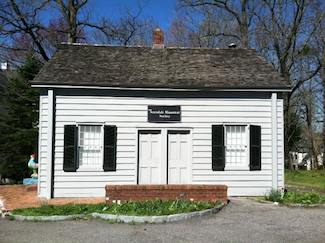 The Scarsdale Historical Society has entered into an agreement to sell its property at 937 Post Road, including the Cudner-Hyatt House and the Quaker Meeting House, to a local residential developer. The sale is subject to a Historic Preservation and Conservation Easement, which will ensure the preservation and protection of the Cudner-Hyatt House.
The Scarsdale Historical Society has entered into an agreement to sell its property at 937 Post Road, including the Cudner-Hyatt House and the Quaker Meeting House, to a local residential developer. The sale is subject to a Historic Preservation and Conservation Easement, which will ensure the preservation and protection of the Cudner-Hyatt House.
The sale of the property is contingent upon the approval of an application to be filed for a subdivision limited to three lots. The sale is also subject to a number of other contingencies, including approval by the Scarsdale Historical Society members and the approval of the New York State Education Department, the Attorney General’s Office, and the Supreme Court of the State of New York.
“The Scarsdale Historical Society is very pleased to enter into this transaction and is thrilled that the Cudner-Hyatt House will be preserved for future generations. This transaction will enable us to expand our efforts to preserve and disseminate historical information about Scarsdale and Westchester,” said Randy Guggenheimer, Scarsdale Historical Society President.
The Scarsdale Historical Society will continue to maintain and make history easily accessible to the public through grants to digitize, preserve, and catalog primary source material that is part of the Society’s collection and owned by other organizations. The public will then have access to all of this material through the Society’s website (www.scarsdalehistoricalsociety.org) and other digital platforms. The Society will also increase grants to promote, fund and encourage the publication of books and materials regarding the history of Scarsdale and Westchester and to fund and produce documentaries regarding their architectural and cultural history. The Society will continue to hold and promote events to display items from its collection and engage the public to share historical items and primary source material with the community and respond to telephone, email and social media requests regarding Scarsdale’s history.
The Society has produced three films, two of which can be viewed on the Society’s website. The initial screening of our newest film, “A River Returns: A History of the Bronx River” will take place on Sunday, March 24th at 3:00pm at the Little Theater at Scarsdale High School.
About the Scarsdale Historical Society
The Scarsdale Historical Society exists to discover, preserve, and disseminate historical information as well as inspire others to learn about and contribute to the history of Scarsdale and the Central mid-Westchester region.












